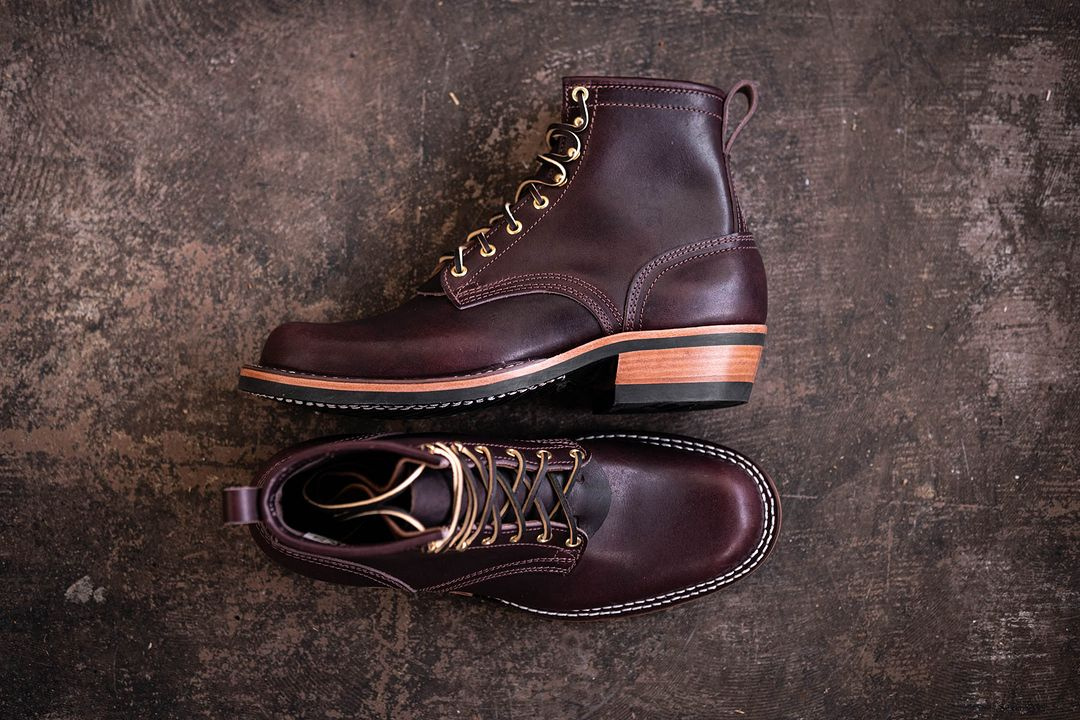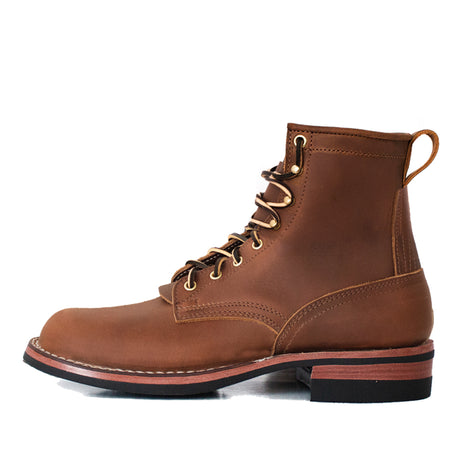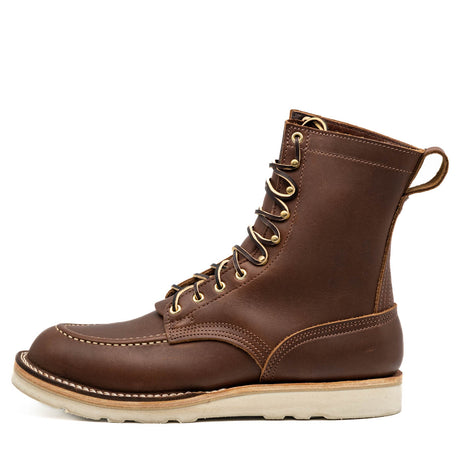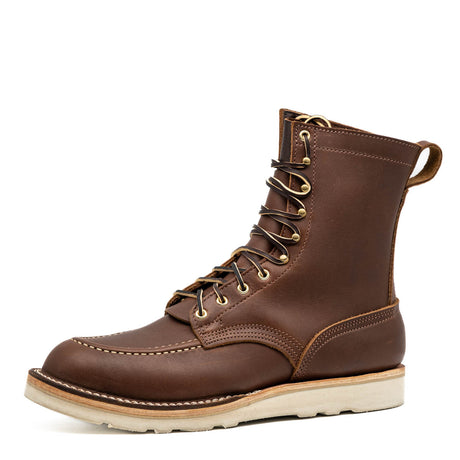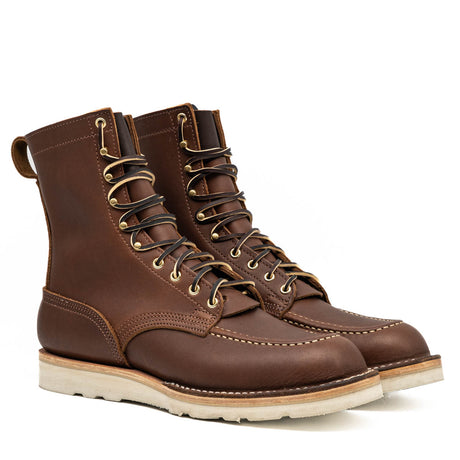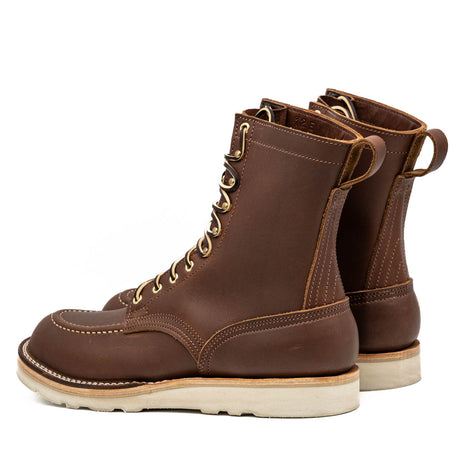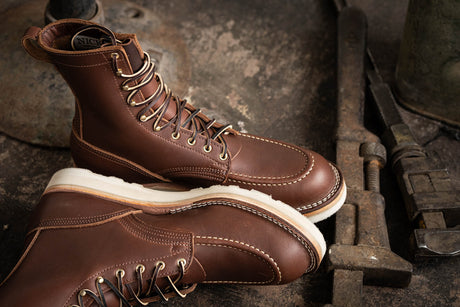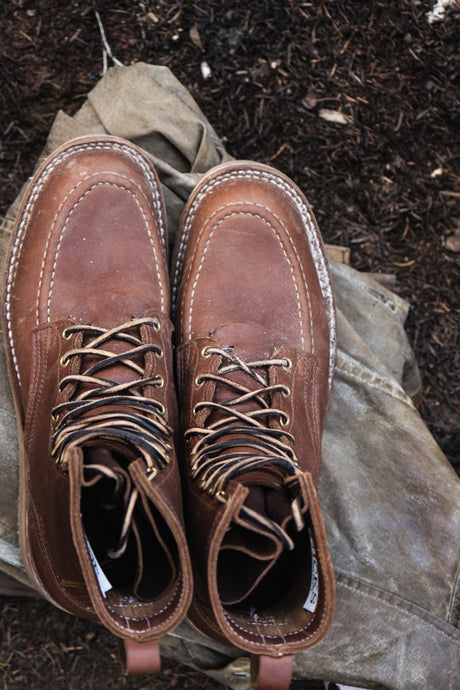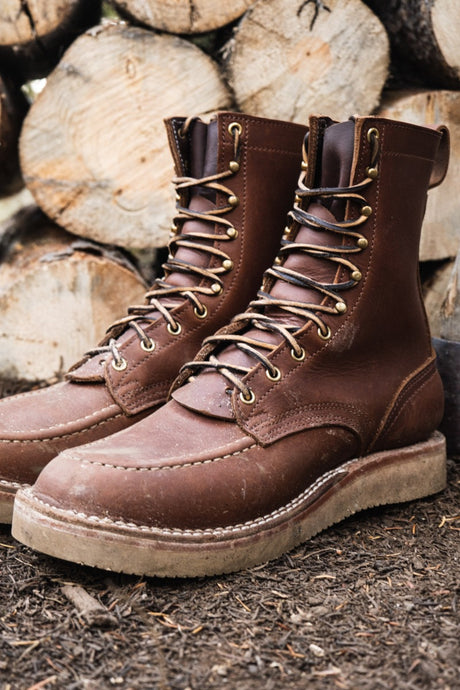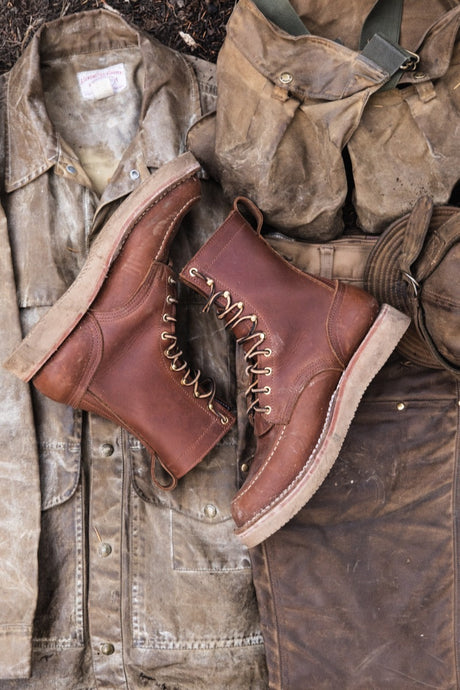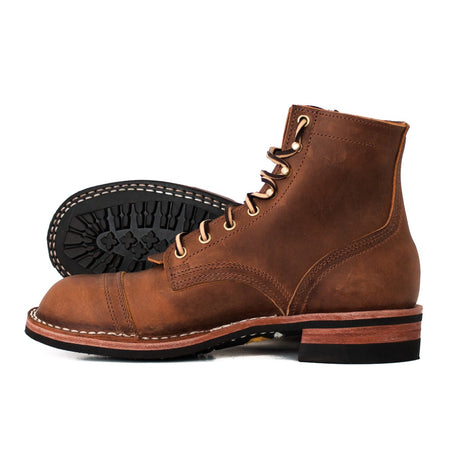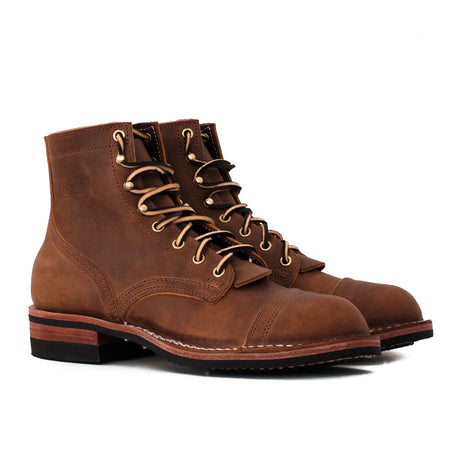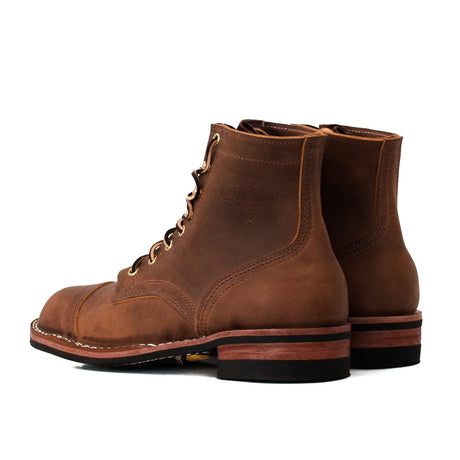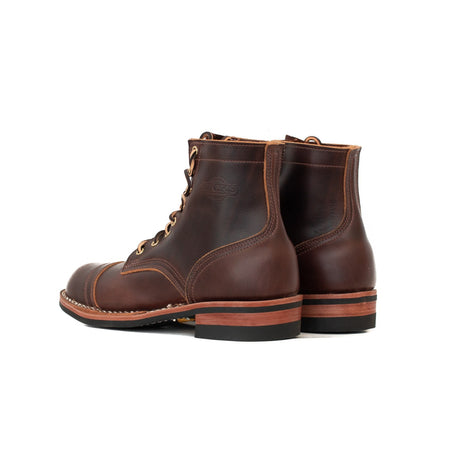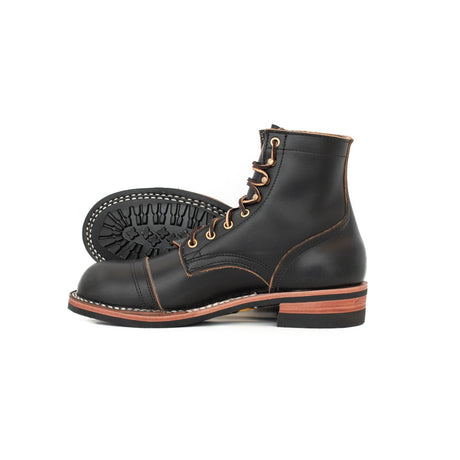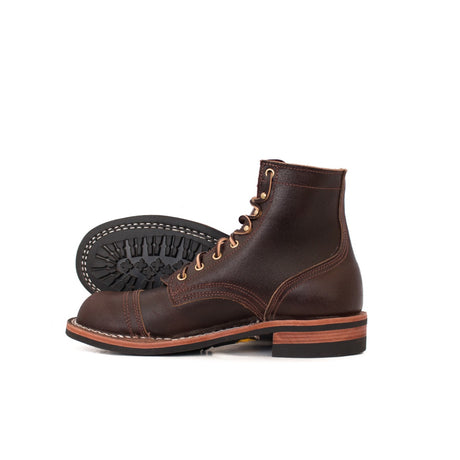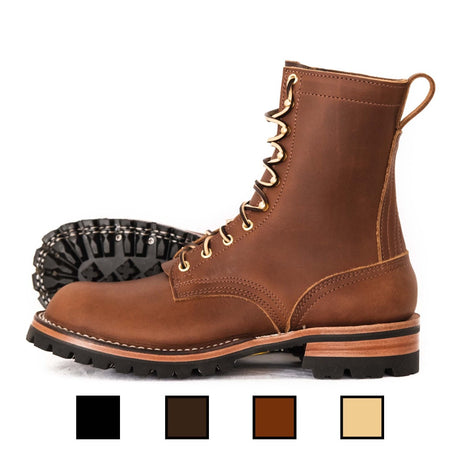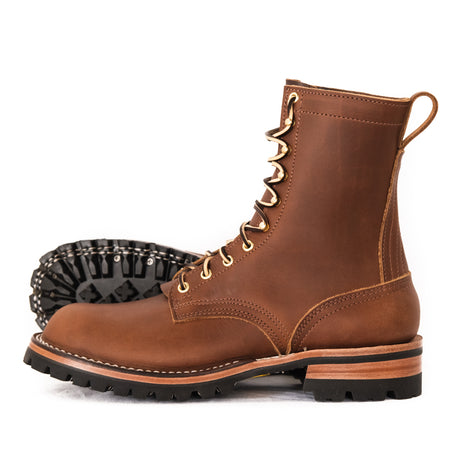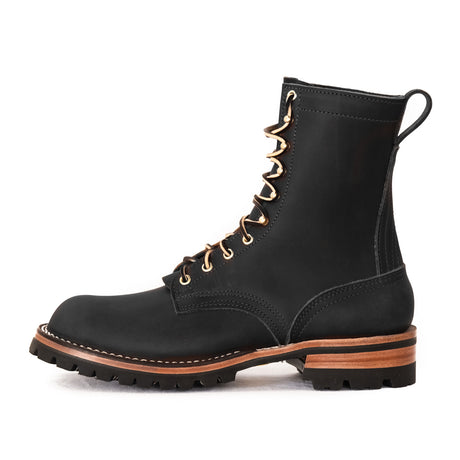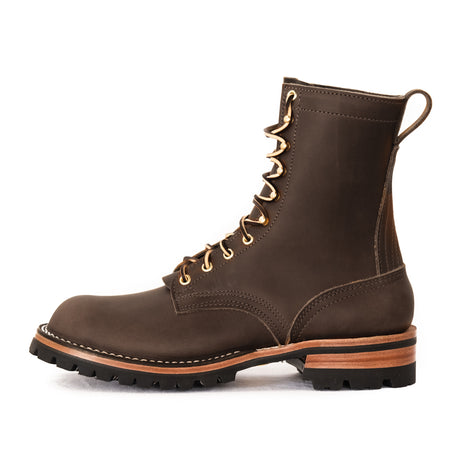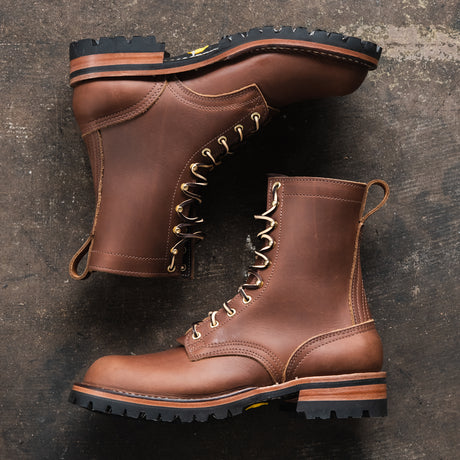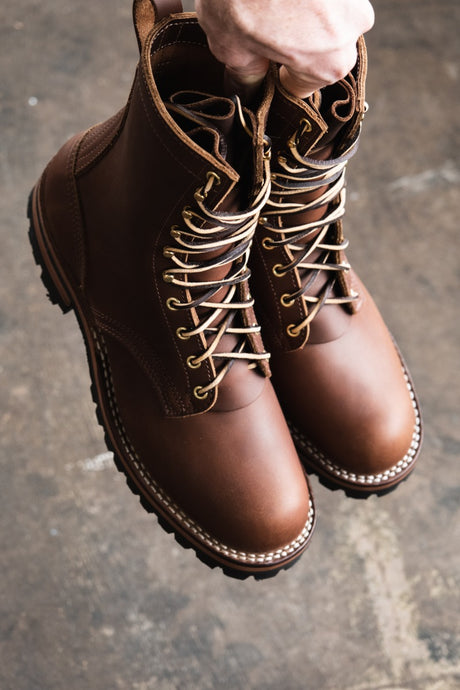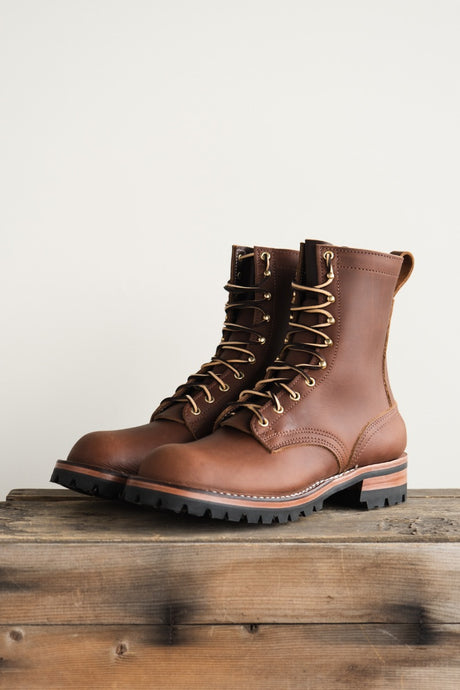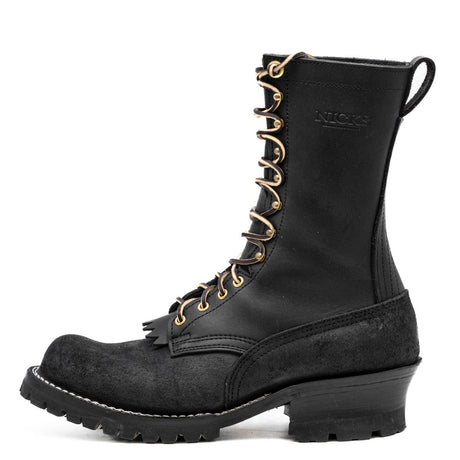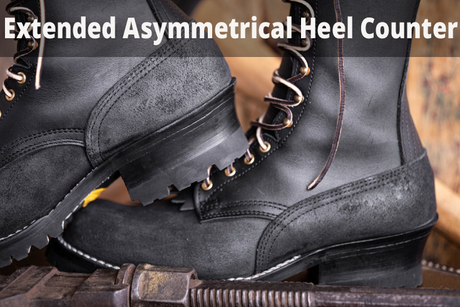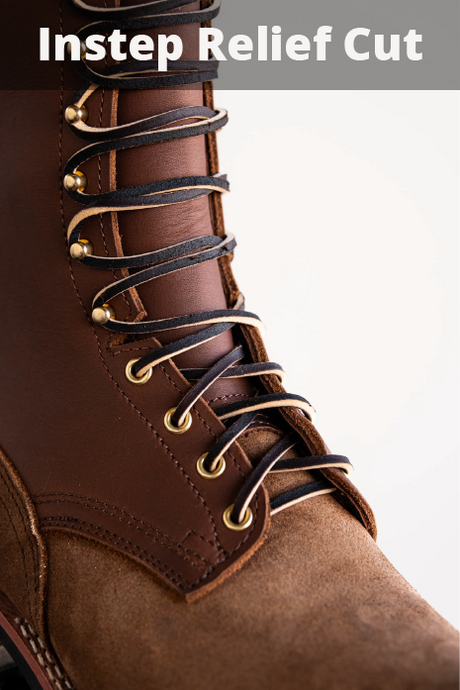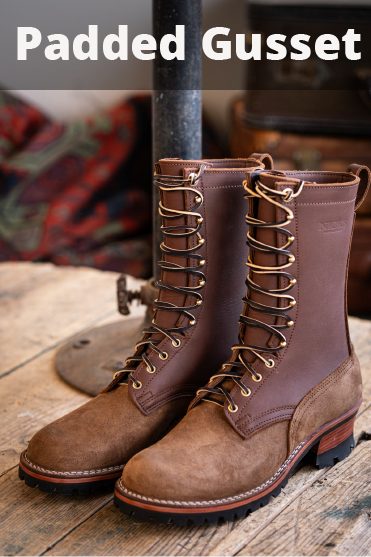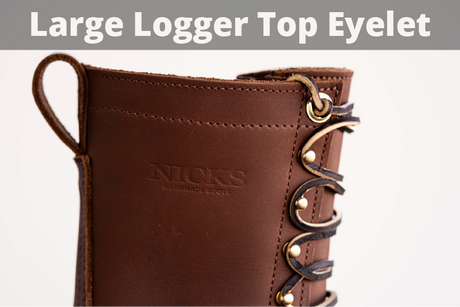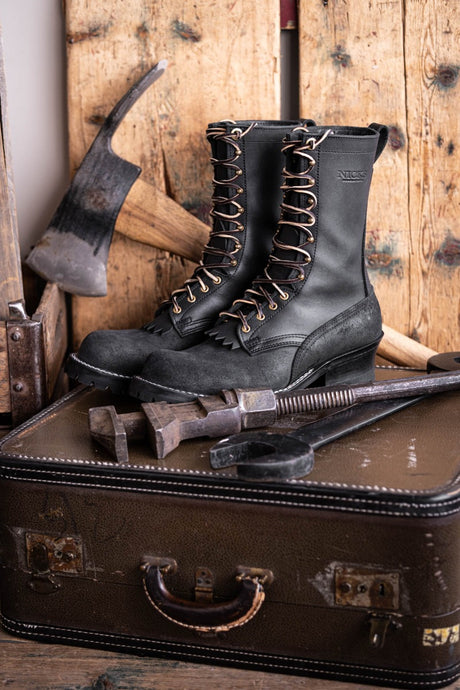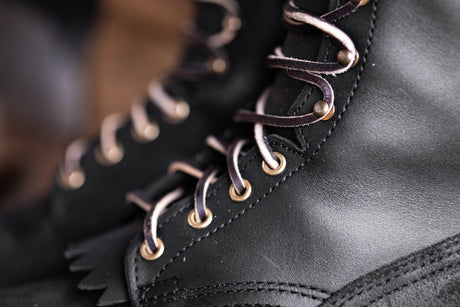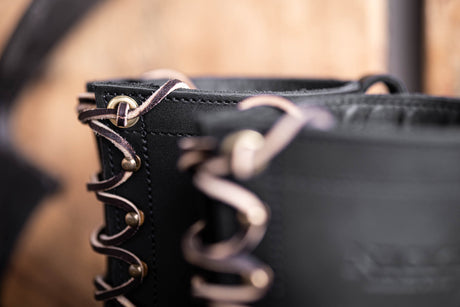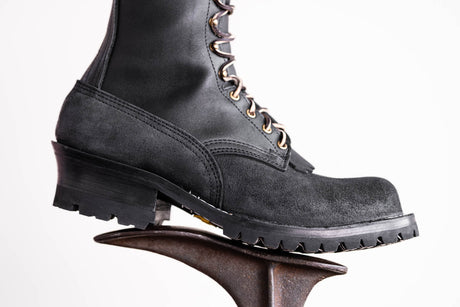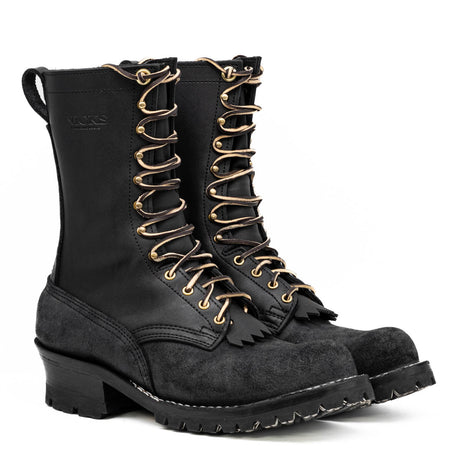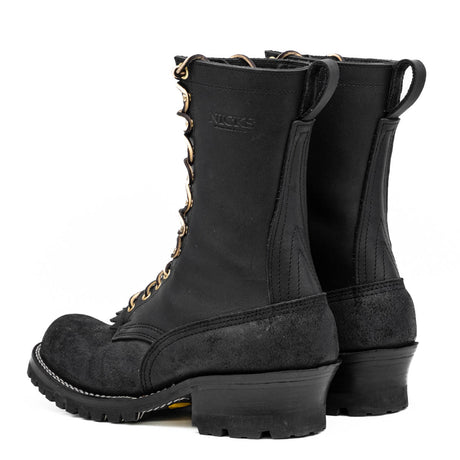Key Takeaways:
- Proper Sizing and Fit: Ensuring that work boots fit properly is vital for preventing injuries and discomfort. Accurate foot measurements and choosing the right boot size and width are crucial steps.
- Essential Features for Safety and Comfort: Features such as waterproofing, slip resistance, and adequate ankle support are essential for safety and comfort in various work environments.
- Regular Maintenance: Consistent care, including cleaning, conditioning, and inspecting work boots, extends their durability and effectiveness in protecting the wearer's feet.
Nicks Boots specializes in crafting high-quality, durable work boots tailored for professionals and enthusiasts. We take great pride in our decades-long expertise in handcrafting reliable footwear. Our understanding of a perfect fit ensures both safety and comfort for every wearer. We're committed to delivering the best experience through our products.
In this piece, we will show you how to achieve the ideal fit for your work boots, emphasizing the importance of boot structure, essential features, and proper maintenance. Understanding these elements is crucial for ensuring a good fit. A well-fitting pair of boots not only enhances comfort but also helps prevent injuries. Proper maintenance, in addition, extends the life of your boots, ensuring lasting performance and support.

Understanding The Essentials Of Boot Fit
Measuring For Size And Width
To ensure a precise fit, start by measuring both the length and width of your foot using a standard measuring tool. Consider the width of your foot, as work boots come in various widths ranging from narrow to extra-wide. Always measure your feet at the end of the day when they are at their largest to avoid choosing boots that are too tight. Make sure to wear the type of socks you'll use with the boots during measurements for accuracy.
Assessing Insole And Arch Support
The right insole provides essential arch support and cushioning, which can significantly affect your comfort throughout the day. Look for insoles that contour well to the natural shape of your foot. This support helps distribute your body weight evenly, reducing fatigue and preventing foot pain. Replaceable insoles can be a bonus, allowing you to customize the level of support or replace them as they wear out.
Ankle Support And Boot Height
Choosing the correct boot height is crucial for optimal ankle support, especially in rugged work environments. Boots with adequate ankle padding can prevent sprains and other injuries by stabilizing the foot and ankle. The height of the boot should also protect against external elements without restricting movement. Consider the specific demands of your work environment when selecting boot height.
Heel And Toe Fit
A well-fitting boot will have a snug heel that prevents the foot from lifting out of the boot with each step. Toe room is equally important; ensure there's about a thumb's width between your longest toe and the front of the boot. This space prevents compression and allows your toes to move freely, which is vital for maintaining balance and avoiding blisters. Regularly check this fit as boots break in and adjust as needed.
Boot Volume And Foot Movement
Proper boot volume is key to comfort, allowing for natural foot movement without restriction. A boot that fits well will hold your foot securely, preventing it from sliding forward or sideways, which can lead to discomfort or injury. Make sure the boot is neither too tight nor too loose, which can affect the boot's effectiveness in protecting and supporting your foot. Adjust laces or consider different boot styles if the fit isn't right.
Key Features To Look For In Work Boots
- Material Quality - The material of your work boots impacts their durability and comfort. Look for high-quality leather or synthetic materials that offer flexibility and weather resistance. This ensures your boots can withstand the demands of your job and environment.
- Waterproofing - For those working in wet conditions, waterproof boots are essential. They keep your feet dry and prevent water-related damages, enhancing the boot's longevity. Ensure the boots have a breathable waterproof membrane.
- Slip Resistance - Safety on the job often requires slip-resistant soles. Choose boots with deep grooves and rubber outsoles that provide excellent traction on various surfaces. This feature is crucial for preventing falls in slippery environments.
- Insulation - If you work in cold conditions, look for boots with proper insulation. Insulated boots help maintain warmth, keeping your feet comfortable during long hours in cold weather. Check the insulation rating to match your climate needs.
Steps To Ensure The Perfect Fit
Try On At The Right Time
The best time to try on work boots is in the late afternoon or evening when your feet have naturally expanded from the day’s activities. This timing mirrors the conditions your feet will experience during a typical workday, ensuring the boots will remain comfortable throughout. It's important to replicate the conditions under which you'll be wearing the boots to avoid surprises with fit after purchase.
Use The Right Socks
To get an accurate feel for how your work boots will fit during actual use, wear the socks that you plan to wear daily with the boots. Socks can vary greatly in thickness and material, each of which can influence the internal space of your boot, potentially altering the fit. This practice helps prevent issues such as tightness or excessive movement inside the boot, which could lead to discomfort or blisters.
Check For Heel Movement
Proper heel fit is critical for comfort and support in work boots. Ensure that your heel does not slip more than a tiny amount when you walk; excessive movement can cause blisters and undermine stability. If there is movement, tightening the laces or trying a different size or style might be necessary. A good fit will keep the heel firmly in place without cutting into the back of your foot.
Walk On Different Surfaces
Before finalizing your boot purchase, walk on different types of surfaces if possible. Many stores have a variety of flooring you can test on, or you can ask to step outside. This test helps you feel how the boots will perform in different work scenarios, whether on slick surfaces, uneven terrain, or hard concrete floors. Good traction and comfort across these conditions are non-negotiable for safety and efficiency at work.
Common Fitting Problems And Solutions
Excessive Heel Slippage
Heel slippage can often occur when boots are new, but it should only be minimal. Excessive slippage typically indicates that the boots are too large, or the fit around the ankle is not secure enough. Using thicker socks or heel grips can help create a tighter fit and reduce movement. Persistent slippage not only causes discomfort but also undermines the protective qualities of the boots, making it essential to address this issue promptly.
Toe Pinching
When toes feel cramped or pinched, it usually suggests that the boots are too small or narrow for your feet. It's essential to ensure there's adequate space—about a thumb's width—between the toes and the front of the boot to prevent compression. If this problem persists, consider trying a wider size or a different style that offers a more generous toe box. Ignoring this issue can lead to long-term damage and discomfort, making proper fit crucial.
Blisters And Hot Spots
Blisters and hot spots typically arise from friction caused by a boot that doesn't fit correctly or is still being broken in. To minimize these issues, ensure that the boots fit snugly without excessive tightness and consider using specialized socks or protective padding during the break-in period. Properly lacing your boots to prevent your foot from moving too much inside can also help reduce the risk of these painful spots.
Arch Pain
If you experience arch pain, this could be a sign that your boots lack sufficient arch support. This support is vital for long hours on your feet, especially on hard surfaces. Consider boots that come with better arch support or invest in custom orthotics or quality aftermarket insoles that fit your specific arch needs. Adequate support not only prevents pain but also helps in maintaining proper foot alignment and reducing fatigue.
Maintenance Tips For Long-Lasting Comfort And Durability
Regular Cleaning
Regular cleaning is essential to extend the life of your work boots. Dirt and grime can degrade materials over time, so it's important to clean your boots after each use, especially when exposed to harsh conditions. Use a soft brush to remove dirt and apply a cleaner suitable for the boot’s material. Allow the boots to air dry in a well-ventilated area away from direct heat to prevent the materials from warping.
Proper Storage
Proper storage is key to maintaining the quality of your work boots. Keep them in a cool, dry environment to prevent the leather or synthetic materials from becoming damp and deteriorating. Storing boots on a rack or using boot trees can help maintain their shape and prevent creases. Additionally, avoid storing boots in direct sunlight, which can bleach and weaken the material.
Conditioning The Leather
Leather boots require regular conditioning to keep the material flexible and prevent drying and cracking. Apply a high-quality leather conditioner every few months, more often if you work in particularly dry or harsh environments. This routine care keeps the leather resilient and resistant to water and other elements. Make sure to clean the boots thoroughly before conditioning to ensure the product is absorbed effectively.
Sole Inspection And Repair
Frequent inspection of your boots' soles can prevent small problems from becoming major issues. Look for signs of uneven wear, deep cuts, or detachment from the boot itself. Early detection allows for timely repairs, potentially saving the cost of a full replacement. Consider resoling when wear is noticeable but the upper part of the boot is still in good condition.
Lacing And Hardware Maintenance
Laces and hardware are often overlooked but crucial for the secure fit and longevity of your boots. Check laces for fraying and replace them if necessary to avoid unexpected breakage. Metal eyelets and hooks should be inspected for rust or damage. Tighten loose components and replace those that are worn out to keep your boots functional and safe.

Final Thoughts
Understanding the proper fit of work boots is crucial for anyone engaged in labor-intensive professions, ensuring both comfort and safety throughout long workdays. The article highlights the importance of precise measurements, insole support, and choosing the right boot height and materials suited to specific work environments. Properly fitted boots prevent injuries and enhance job performance by providing stability and support.
Additionally, the longevity of work boots can be maintained through regular maintenance, careful storage, and timely repairs. This approach not only protects the wearer but also represents a sound investment in occupational health and productivity. Ensuring that work boots fit correctly is a critical step for any professional looking to maximize safety and comfort at work.
Read also:
Frequently Asked Questions About How Should Work Boots Fit
What is the ideal time to measure my feet for work boots?
The best time to measure your feet is in the late afternoon or evening when your feet are at their largest. This ensures that the boots fit comfortably even as your feet naturally expand during the day. Accurate measurements at this time will help prevent choosing boots that are too tight.
Can the sock type I wear affect the fit of my work boots?
Yes, the socks you wear can significantly influence the fit of your work boots. Thicker or padded socks can fill more space inside the boot, affecting snugness and comfort. It’s important to wear the type of socks you plan to use regularly when fitting new boots.
What should I do if my heels slip in new work boots?
If your heels slip in new boots, this might indicate a size too large or the need for better ankle support. You can try using thicker socks or adding heel grips to improve the fit. If slippage persists, consider a different boot size or style for better security.
How much toe room is necessary in work boots?
It's crucial to have about a thumb's width of space between your longest toe and the front of the boot. This space allows your toes to move freely, which is essential for balance and comfort. Lack of adequate toe room can lead to blisters and discomfort.
What kind of insoles should I look for in work boots?
Opt for insoles that offer substantial arch support and cushioning. Good insoles help distribute your weight evenly, alleviating foot fatigue and pain. Replaceable insoles are also beneficial as they allow for customization and easy replacement when worn out.
How do I know if my work boots are too tight?
Work boots are too tight if you feel discomfort, pinching, or restricted movement in your toes. Boots should be comfortable to wear without any pressure points or squeezing sensations. If these issues occur, trying a larger or wider size might be necessary.
What features are important for work boots used in wet conditions?
For wet conditions, select work boots with waterproof materials and a breathable membrane. These features keep your feet dry and comfortable, while also protecting against water damage. Additionally, ensure the boots provide slip resistance for safety in slippery environments.
How should I care for leather work boots to extend their life?
To maintain leather work boots, clean them regularly and apply a quality leather conditioner. Avoid exposing them to direct heat and sunlight to prevent the leather from drying and cracking. Proper storage in a cool, dry place also helps maintain their condition.
What's the significance of boot height in work boots?
The height of your work boots is critical for providing adequate ankle support and protection from external elements. Higher boots are especially important in rugged or hazardous environments to prevent injuries. Choose a height that balances protection with comfort and mobility.
How can I test if the work boots fit correctly before buying?
To ensure a proper fit, walk on various surfaces to test comfort and stability. Check for any heel slippage or toe discomfort during this trial. Adequate traction and a stable feel are important indicators that the boots fit well for your needs.



